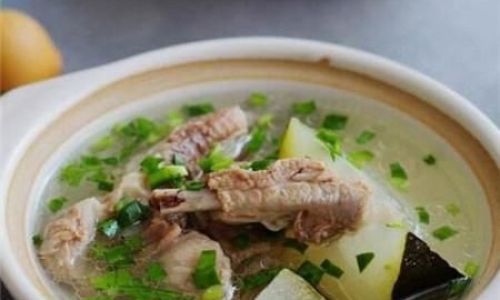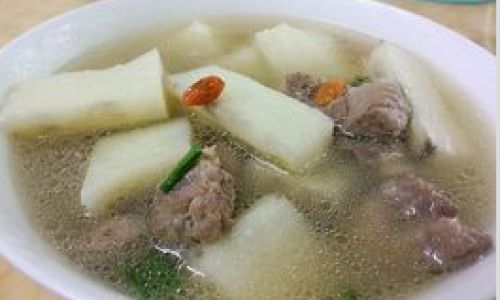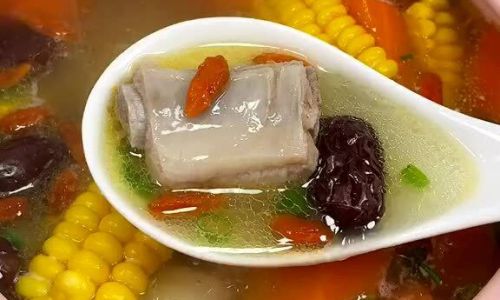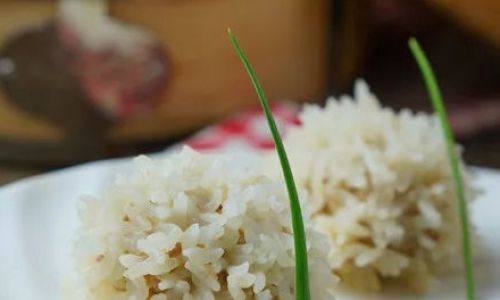Introduction
In the realm of culinary delights, soups occupy a unique and cherished place. They are not merely meals but experiences that warm the soul, nourish the body, and evoke memories of comfort and care. Among the myriad of soup varieties, pork rib soup stands out for its rich flavor, tender meat, and the profound nutritional benefits it offers. This article will guide you through the step-by-step process of crafting a nutritious pork rib soup that is sure to delight your taste buds and rejuvenate your well-being.
The Importance of Nutritious Pork Rib Soup

Pork rib soup is more than just a hearty dish; it is a repository of essential nutrients. Pork ribs are a good source of protein, which is vital for muscle repair and growth. They also contain essential fats, vitamins, and minerals such as iron, zinc, and phosphorus, contributing to overall health and well-being. The bones used in making the soup are rich in collagen and minerals that promote bone health and skin elasticity. Furthermore, the slow cooking process extracts nutrients from the bones and meat, making the broth highly nutritious and easily absorbable.
Ingredients for Nutritious Pork Rib Soup
Before diving into the preparation, let’s list down the ingredients you’ll need:
- Pork Ribs: Preferably meaty and with some bone for added flavor and nutrition.
- Vegetables: Carrots, celery, onions, and garlic for added sweetness, aroma, and nutrients.
- Fresh Herbs: Parsley, thyme, and bay leaves to enhance the flavor profile.
- Spices: Salt, black pepper, and paprika for seasoning.
- Broth or Water: Chicken or vegetable broth can be used, but water works just as well with the right seasoning.
- Optional Ingredients: Leeks, potatoes, or turnips for added texture and nutrition.
- Aromatics: A splash of vinegar or lemon juice can help draw out the nutrients from the bones.
Preparation Steps
Step 1: Preparing the Pork Ribs
Begin by rinsing the pork ribs thoroughly under cold running water to remove any impurities or blood. Pat them dry using paper towels. You can opt to trim off any excess fat if you prefer a leaner soup, but some fat adds flavor and richness to the broth.
Step 2: Blanching the Ribs
Place the pork ribs in a large pot filled with cold water. Bring the water to a boil, and let it simmer for about 5-7 minutes. This process, known as blanching, helps to remove impurities, blood, and any unwanted odors from the ribs. Discard the boiling water and rinse the ribs again under cold water.
Step 3: Preparing the Vegetables

While the ribs are blanching, chop the vegetables into bite-sized pieces. Peel and slice the carrots, celery, and onions. Mince the garlic for a stronger flavor release. Fresh herbs should be tied into a bundle using kitchen twine for easy removal later.
Step 4: Assembling the Soup
Return the blanched pork ribs to the cleaned pot. Add the chopped vegetables, minced garlic, and herb bundle. Pour in enough broth or water to fully submerge the ingredients, ensuring there’s enough liquid for the soup to simmer without drying out.
Step 5: Seasoning and Flavoring
Add a pinch of salt, a few grinds of black pepper, and a teaspoon of paprika for a hint of smokiness. If using, add a splash of vinegar or lemon juice to help extract the nutrients from the bones and enhance the flavor of the broth.
Step 6: Simmering
Bring the pot to a gentle boil, then reduce the heat to low. Cover the pot and let the soup simmer for at least 2-3 hours, or until the pork ribs are tender and the broth has taken on a rich, golden hue. The longer the soup simmers, the more nutrients will be extracted from the bones and meat, making it more nutritious and flavorful.
Step 7: Tasting and Adjusting
After the soup has simmered for the desired duration, taste the broth and adjust the seasoning as needed. You may need to add more salt or pepper to balance the flavors. Remove the herb bundle and discard it.

Step 8: Serving
Ladle the nutritious pork rib soup into bowls, ensuring each serving includes a piece or two of tender pork rib, vegetables, and plenty of broth. Garnish with freshly chopped parsley or a wedge of lemon for an added touch of freshness.
Storage and Reheating
Leftover pork rib soup can be stored in airtight containers in the refrigerator for up to 3-4 days. To reheat, simply place the desired portion in a saucepan and warm over medium-low heat until heated through. Avoid over-boiling, as this may alter the texture of the vegetables and meat.
Conclusion
Crafting a nutritious pork rib soup is not only a culinary endeavor but a journey towards wellness. By following these steps, you’ll be rewarded with a dish that is not only delicious but also packed with essential nutrients that support overall health. Whether you’re enjoying it on a cold winter night or as a comforting meal after a long day, this pork rib soup will surely become a staple in your kitchen, bringing warmth, nourishment, and joy to your table. So, gather your ingredients, roll up your sleeves, and embark on this delightful culinary adventure today!





0 comments